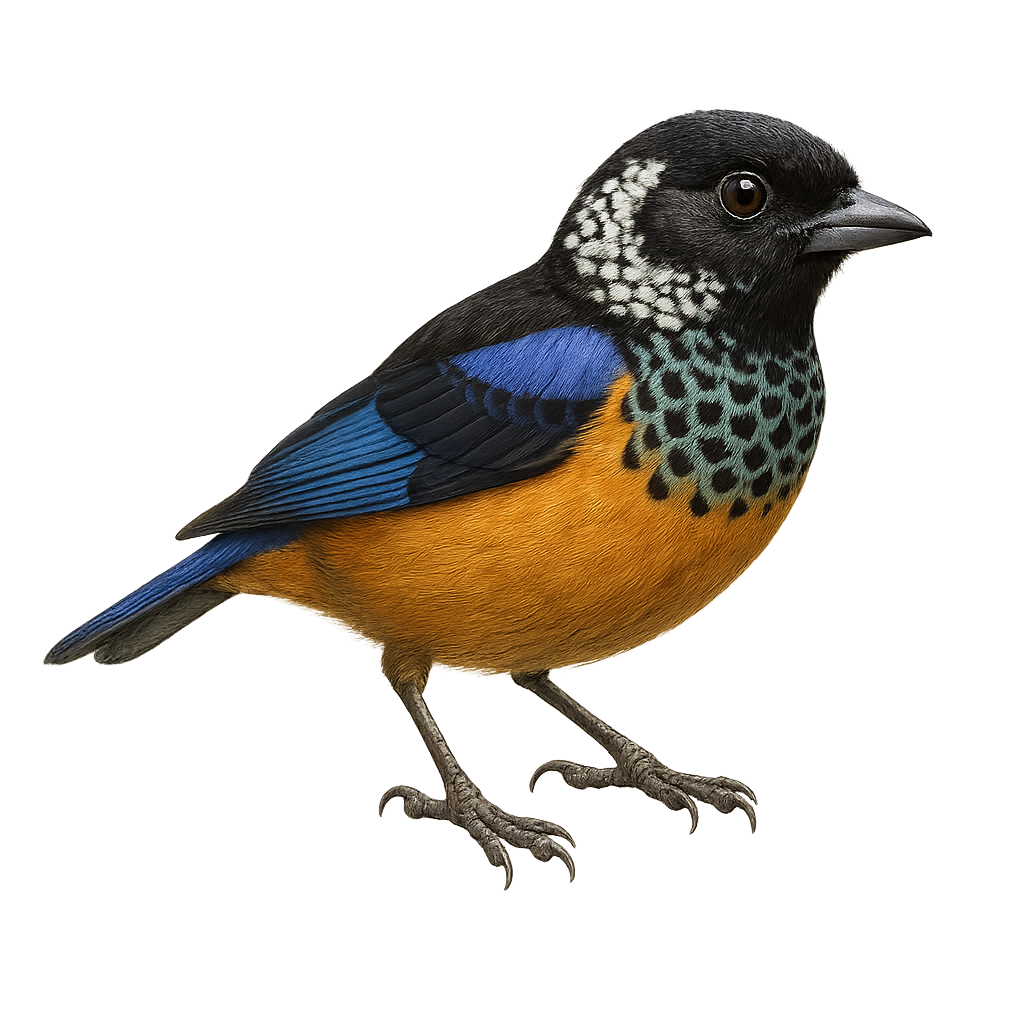Your wildlife photography guide.
Explore the spangle-cheeked tanager in detail, study its behavior, prepare your shots.
Where to observe and photograph the spangle-cheeked tanager in the wild
Learn where and when to spot the spangle-cheeked tanager in the wild, how to identify the species based on distinctive features, and what natural environments it inhabits. The WildlifePhotographer app offers tailored photography tips that reflect the spangle-cheeked tanager’s behavior, helping you capture better wildlife images. Explore the full species profile for key information including description, habitat, active periods, and approach techniques.
Spangle-cheeked Tanager
Scientific name: Tangara dowii

IUCN Status: Least Concern
Family: THRAUPIDAE
Group: Birds
Sensitivity to human approach: Suspicious
Minimum approach distance: 10 m
Courtship display: March to May
Incubation: 13-15 jours
Hatchings: March to June
Habitat:
Humid forests, forest edges, secondary forests
Activity period :
Primarily active during the day, with peak activity in the morning and late afternoon.
Identification and description:
The Spangle-cheeked Tanager, or Tangara dowii, is a small bird of Central American highland rainforests, notable for its dazzling plumage of turquoise blue, vivid green, and deep black, with metallic reflections. It is mainly found in Costa Rica and western Panama, inhabiting humid mountain forests. This species feeds on fruits, nectar, and insects, often moving in active mixed flocks in the canopy. Though shy, its brilliant colors make it a favorite among birdwatchers and photographers. Its population is generally stable, though local deforestation may pose a threat.
Recommended lens:
400mm – adjust based on distance, desired framing (portrait or habitat), and approach conditions.
Photography tips:
To photograph the Spangle-cheeked Tanager, focus on forest edges where it is more active. Use a 400mm or longer telephoto lens to capture precise details without disturbing the bird. Be patient and discreet, as this bird, while social, remains suspicious of humans. The best times to observe it are early morning or late afternoon when natural light is soft and flattering.
The WildlifePhotographer App is coming soon!
Be the first to explore the best nature spots, track rutting seasons, log your observations, and observe more wildlife.
Already 1 439 wildlife lovers subscribed worldwide

